.jpg)
EugèneDelacroix|Death of Sardanapalus, 1827
What is Romanticism?
💡This painting is based on personal feelings of love, anguish, and other emotions.
💡Hewas the originator of rough brushwork and thick paint
💡Began to incorporate contemporaneous motifs
The Eve of Romanticism
Romanticism is a spiritual movement that flourished not only in the fine arts but also in politics, literature, music, and many other fields. It is characterized by its emphasis on sensitivity and subjectivity, as opposed to the emphasis on reason andrationalism of previous eras. In this respect, it is the opposite of classicism. The concepts of the movement included the praise of love, theexaltation of national consciousness, and a longing for the Middle Ages. From a broad perspective, the formation of the modern nation-state was prompted by the activities of the citizens who received such a message.
The path of Romanticism and representative artists
The first Romantic painters were Caspar David Friedrich and J.M. William Turner, born in 1774 and 1775, respectively. Both painters focused on landscapes, achieving the "intense" and "passionate" Romantic depictions. In particular, Turner's rough brushwork in his seascape paintings reveals a perspective that captures impressions rather than precise forms. In this respect, he is often named as the ancestor of Impressionism.
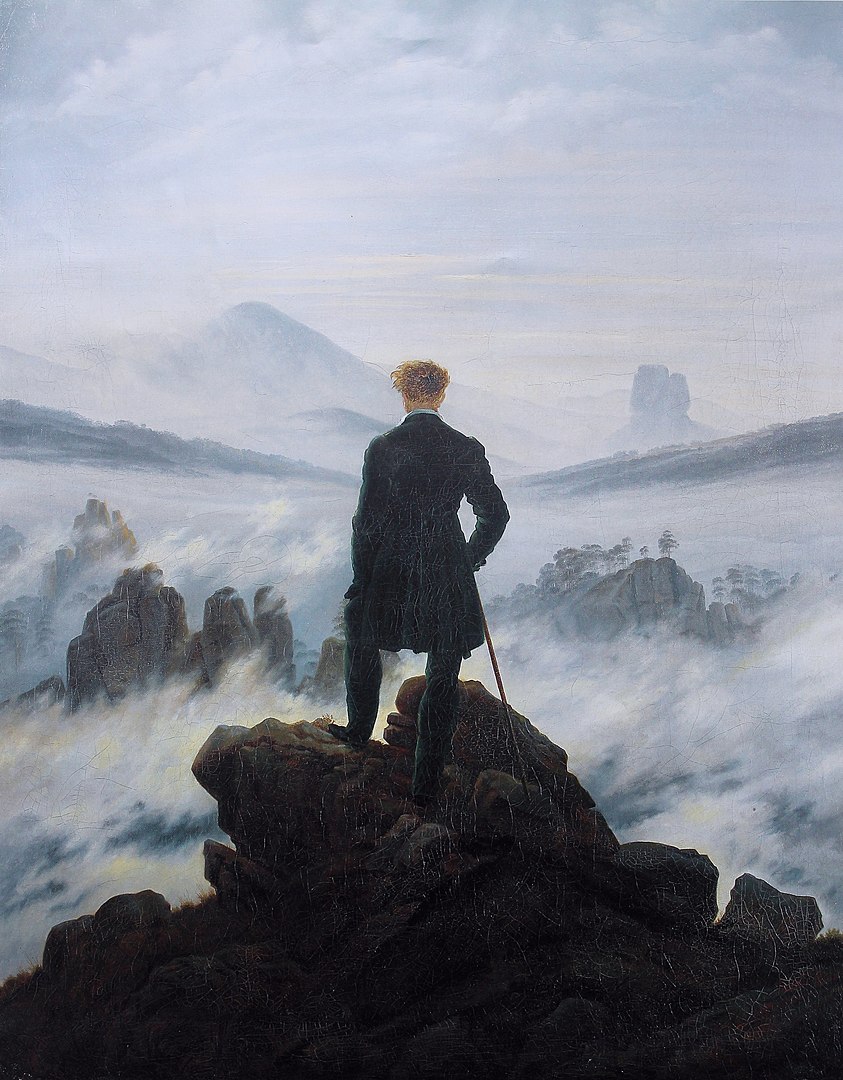
Kasper David F riedrich, Wanderer above the Sea of Fog, 1818
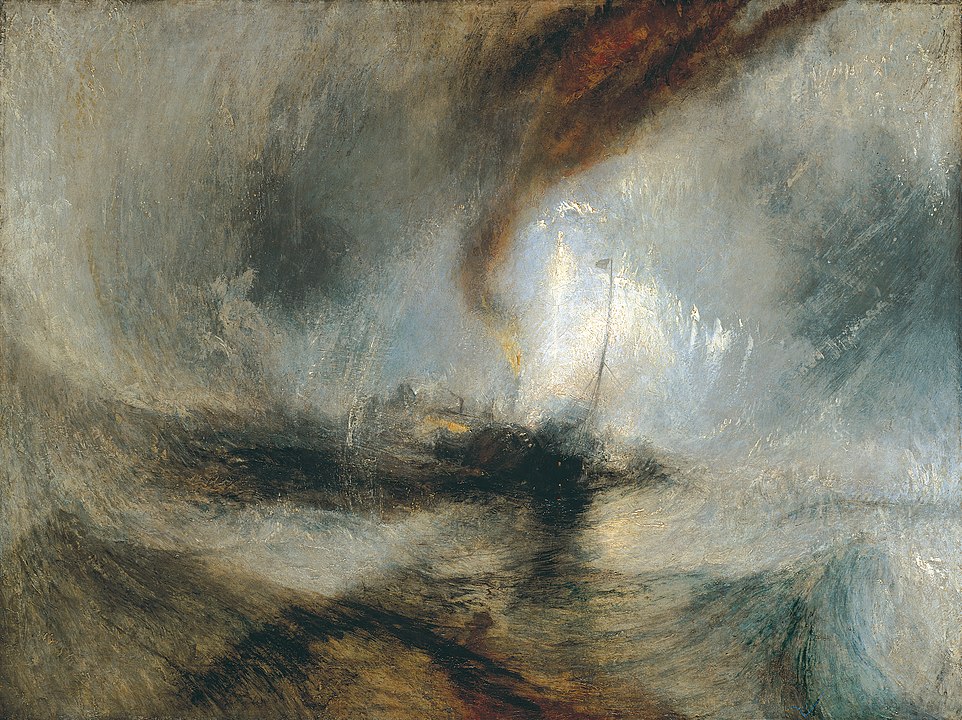
Snow Storm: Steam-Boat off a Harbour's Mouth, 1842
Samuel Palmer and William Blake were also artists who practiced Romanticism in England. However, William Blake made history as a poet as well as a painter, and you may have heard of him as a poet.
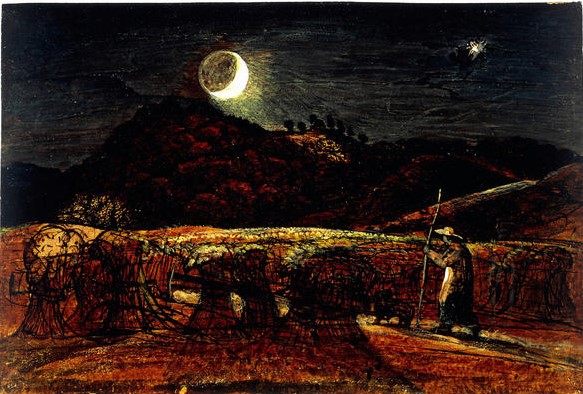
A Cornfield by Moonlight with the Evening Star, 1830
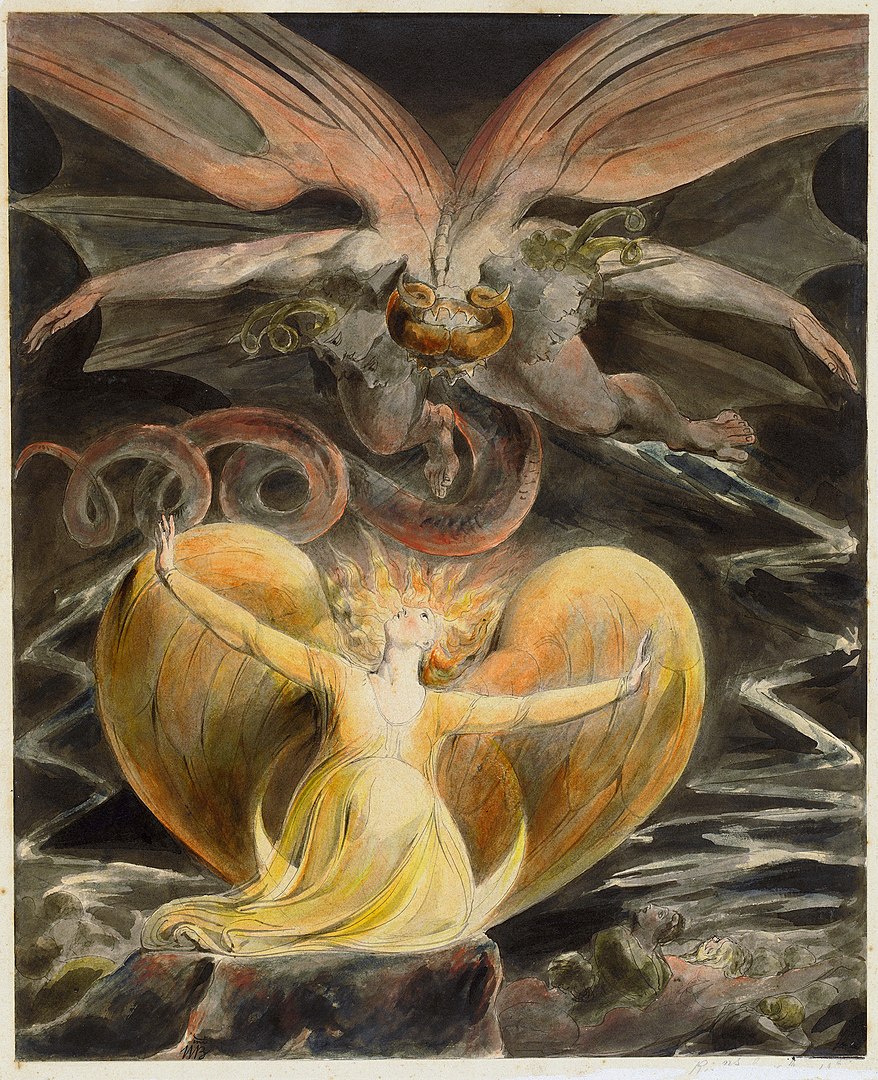
The Great Red Dragon and the Woman Clothed with Sun, 1805
The flourishing Romanticism in France can be seen early on in writers such as Anne-Louis Giraudet-Triozon, who was one of the leading painters of Classicism. He was a pupil of Jacques-Louis David, one of the leading classical painters. When Giraudet published Ossian receiving the Ghosts of the French Heroes (1801), a painting in a new style, David is said to have said
Either Giraudet has lost his mind, or I have lost my mind about how to paint.
is said to have said.

Anne-Louis Giraudet-Triozon, O ssian receiving the Ghosts of the French Her oes , 1801
A more Romantic style with a unique narrative background can be found in the work of Théodore Géricault. His masterpiece, " The Raft of the Medieuze," depicts, in life size, the events that occurred when the French frigate Medieuze was wrecked.
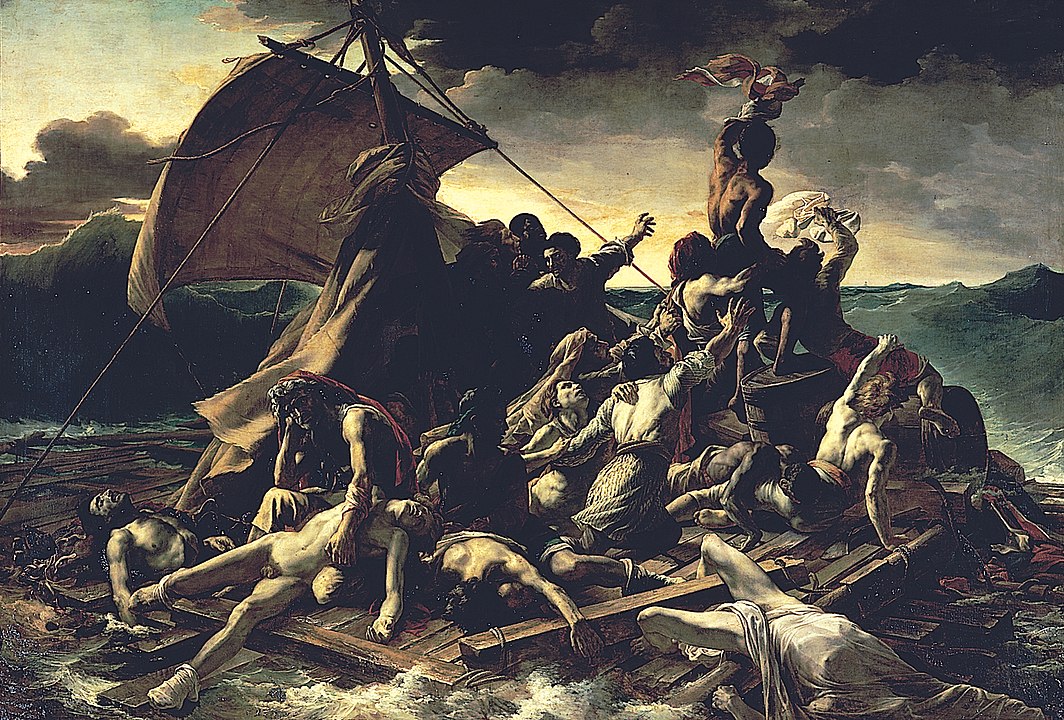
Le Radeau de la Méduse, 1818 - 1819
Eugène Delacroix became famous for paintings such as " The Massacre on the Island of Chios. He also painted many scenes from poems by the poet Byron, and depicted the Arab people he saw during his military service in North Africa in a variety of ways. Perhaps the most famous is "The Statue of Liberty Leading Her People. Together with Gericault's "The Raft of the Medieuze," it remains one of the most famous works of French Romanticism. Both paintings are " contemporary narrative paintings" that serve as " record and news paintings " by depicting topical subjects.

La Liberté guidant le peuple, 1830
Francisco de Goya, who was active in Spain, has been praised as "the last master who created an unbroken unity where thought and practice are in harmony. However, opinions differ as to whether or not Goya can be counted as a member of Romanticism. The absurdity and demonic creatures that often appear in his works have only superficially in common with the Gothic taste of northern Europe, but the depiction itself uses classicist techniques. Nevertheless, in terms of subject matter, we can certainly recognize his innovations in Spain at the time in his depictions of imaginary and dream worlds. In terms of technique as well, his clear brushwork and thick impasto paint distinguish him from the neoclassicists.
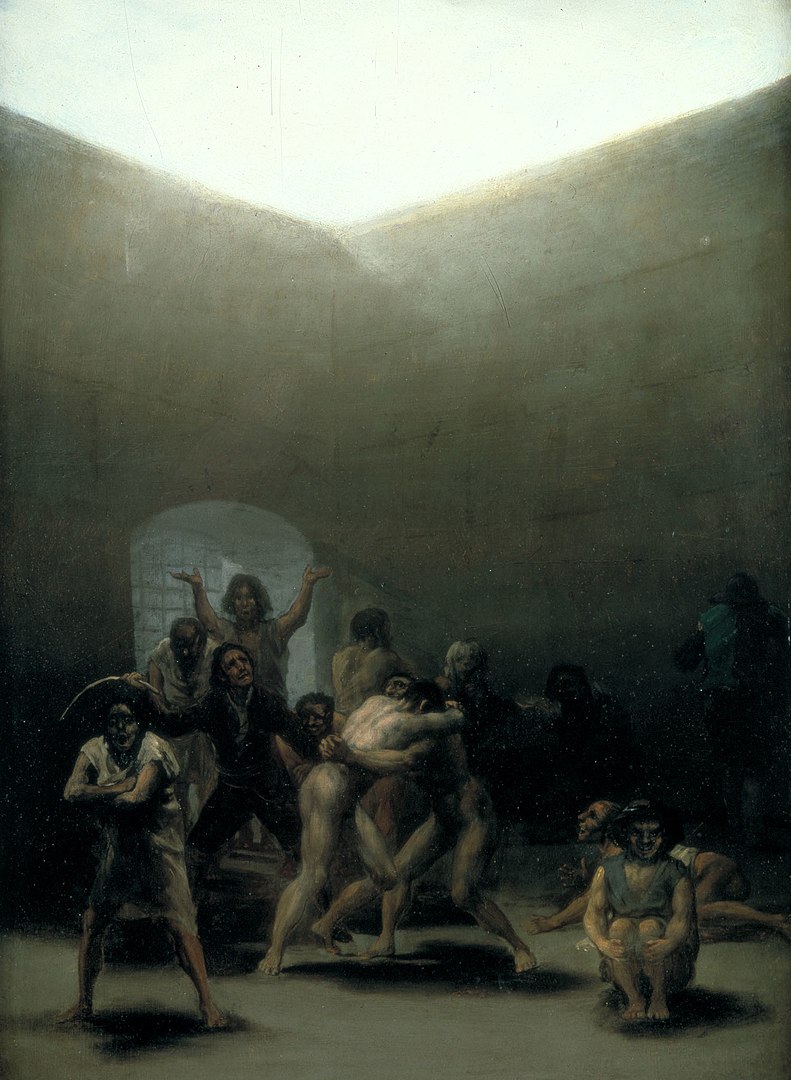
Francisco de Goya,Yard with Lunatics, 1794
Sculptors of Romanticism
In the field of sculpture, there were François Rude andAugustin Preaux. In sculpture, unrestrained expression was less developed than in painting, due to the physical limitations of marble, the predominant material of the time, compared to painting. The emphasis on the facial expressions of the figures is a major characteristic of these works.
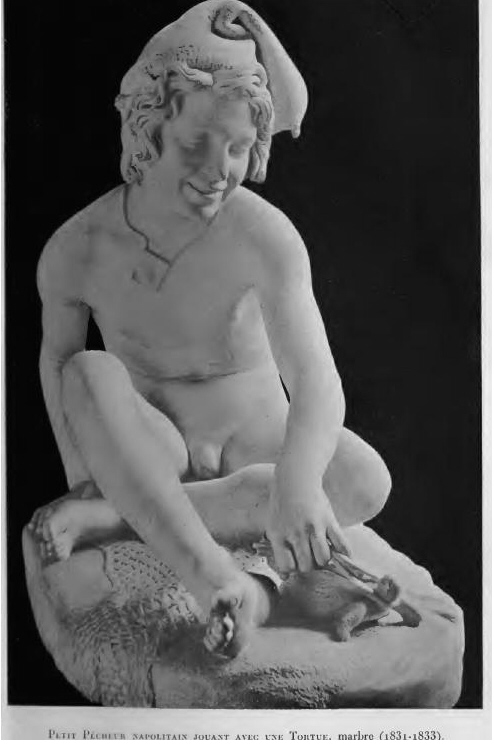
Neapolitan Fisher Boy Playing with a Tortoise, 1831-33

Jupiter et le Sphinx, 1868
A Bird's-Eye View of Romanticism
At the heart of Romanticism was an emphasis on the fundamental uniqueness of the individual, a trait that Classicism and Dogmatism did not emphasize, and existential anxiety caused by the desires of the ego. It includes a wide range of emotions - melancholy, anxiety, agitation, anguish, affection, etc.
In expressing these emotions, the stable and idealistic motifs and techniques of classicism were not appropriate. Artists therefore preferred subjects such as exoticism, Orientalism, mysticism, and dreams.
This argument was eventually succeeded by realism and naturalism.
Appendix: Etymology of "Romanticism
During the Roman Empire, there were two types of Latin: written Classical Latin and colloquial Latin. However, the difference between the two was not so great. As time went on and the language entered a period of decline, the difference between written and spoken Latin gradually widened to the point where they could no longer be called varieties of the same language. As a result, the written language became too difficult to understand for the common people who had no knowledge of classical Latin.
In contrast, the spoken language of the period is called Romance language. Literary works written in Romance languages came to be called Romance and were considered the counterpart of Greek and Roman classical literature. This is where the word Romanticism (Romanticism) comes from. Romanticism was first established in literature, not art. Delacroix's preference for Byron's poetry follows such a timeline. In other words, the word "Romantic" in Romanticism means " originating from the culture of the common people in the Roman Empire (not the ruling class or the intellectual class).

Grand Staircase of the Paris Opera by Charles Garnier (1861-75)